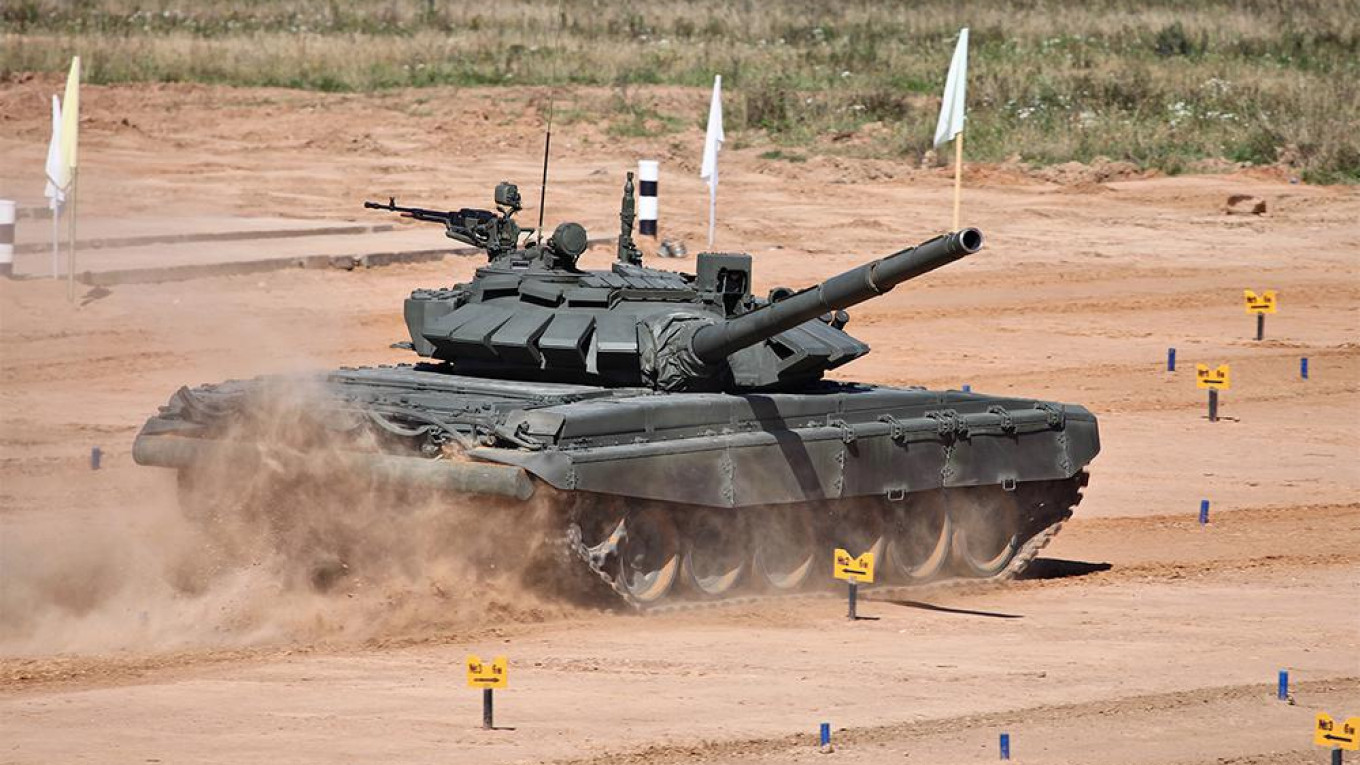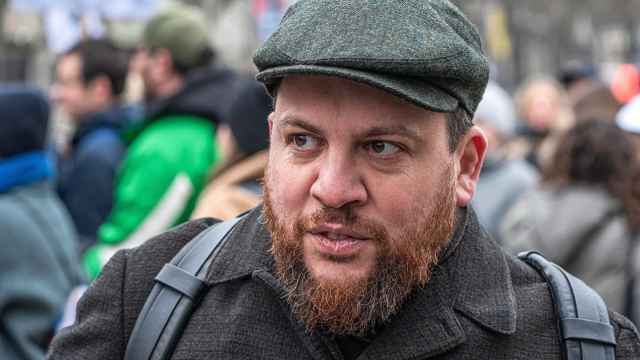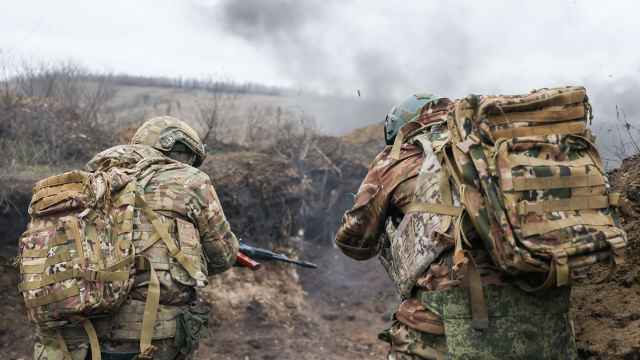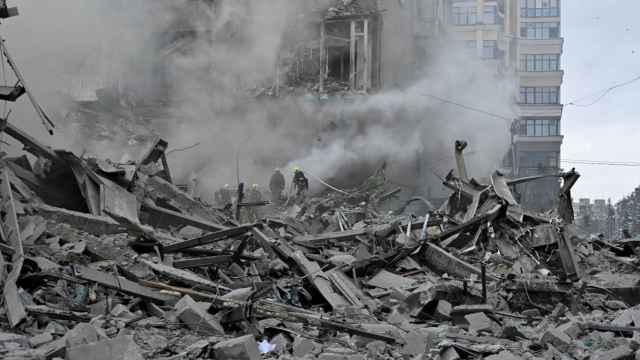It’s amazing how little has changed in the strategic outlook of the Russian military in the past few decades.
On Sept.7, General Alexander Shevchenko announced a major change in plans to scrap 10,000 old Soviet-made tanks still on the Defense Ministry’s inventory.
By 2020 only 4,000 tanks will be scrapped, while the rest will be modernized and put back into service or exported. “The changing international situation, the increased patriotism of Russian citizenry and the introduction of new modernization technologies have induced a change of plans,” Shevchenko explained.
Up to a thousand new and modernized tanks are being delivered annually to army units. The military maintains that the modernized T-72B3 — with reinforced armor, a better gun, French-designed night-vision equipment and a computerized command and control system (all installed at the UralVagonZavod in Nizhny Tagil) — is as good as a new T-90A, but costs only a fraction of its price.
This year T-72B3s have been supplied to front-line tank units in Crimea and in the Rostov region bordering Ukraine, as well as to units of the elite 1st Guards Tank Army in the Moscow and Nizhny Novgorod regions facing West.
These hordes of modernized Soviet tanks are backing up a Cold War-era defense strategy based on a threat assessment that seems to be deliberately doctored to justify a massive rearmament. By 2020 it may cost the nation around $1 trillion.
Today France and Germany have about 250 tanks each. Britain has a couple of main battle tank hussar regiments but has completely ceased tank production. The U.S.’ heavy armored and mechanized divisions that during the Cold War were facing the Soviets in the Fulda Gap in central Germany left at the end of 1990 to attack Saddam Hussein and never came back, reducing U.S. armor in Europe to one permanently based heavy brigade (that is, before Crimea and Donbass).
The massive tank fist that Russia is building up today seems to be a wasteful investment — but the same thing happened during the Cold War as the Soviet Union secretly amassed 100,000 tanks to face NATO’s 30,000. Most of that armor never saw any real action like the grand battleship “dreadnaught” fleets, built before World War I and scrapped after.
During the 1990s, as the great Red Army disintegrated, the strategic focus of the Russian Armed Forces General Staff never wandered away from its Cold War objective of presenting the Kremlin with the absolute worst case scenario of external threat assessment.
In June 1999, before Vladimir Putin was appointed President Boris Yeltsin’s successor, the Russian military held joint Russia-Belarus strategic military exercises called Zapad-99 with a scenario not much different from this year’s Zapad-2017: Western forces invade Russia and Belarus, but are eventually repelled and defeated.
Both Zapad-99 and Zapad-2017 featured a local confrontation that escalates into a large regional — all-European — war. Russia comes out the victor by delivering a limited nuclear strike, assumed to have destroyed a couple of cities in Europe and North America, scaring the West into withdrawal and submission.
After Zapad-99 such a “preventive” strike has been known as “nuclear de-escalation.” In 1999 this “de-escalation” was imitated by bombers flying over the Atlantic and the Arctic to designated points were they could fire long-range cruise missiles at the U.S. In 2017 an RC-24 “Yars” ICBM was testfired on Sept. 20, and bombers flew over the Atlantic, Baltic and Norwegian Seas.
Competing with other power groups in Putin’s entourage for increasingly scant national resources, the Russian military is peddling a mounting threat of war with the West, while at the same time investing in a defense perimeter in the Arctic and the Pacific.
Of course the true main opponent of our generals isn’t in Washington, but in Moscow — the Finance Ministry and the so-called economic liberal block in government — aka the “party of peace” — that wants to trim defense spending.
Real bloody wars are being fought on Russia’s strategic periphery, and the threat of them escalating is just as real, while national resources are being squandered and threaten to send Russia into an economic nosedive, just like 25 years ago.
..........................................................................................................................................................................
Dr. Pavel Felgenhauer is a defense analyst and columnist in Novaya Gazeta, and a Jamestown Foundation Senior Fellow.
*This article is part of The Moscow Times' 25th anniversary special print edition. To view the entire issue click here.
A Message from The Moscow Times:
Dear readers,
We are facing unprecedented challenges. Russia's Prosecutor General's Office has designated The Moscow Times as an "undesirable" organization, criminalizing our work and putting our staff at risk of prosecution. This follows our earlier unjust labeling as a "foreign agent."
These actions are direct attempts to silence independent journalism in Russia. The authorities claim our work "discredits the decisions of the Russian leadership." We see things differently: we strive to provide accurate, unbiased reporting on Russia.
We, the journalists of The Moscow Times, refuse to be silenced. But to continue our work, we need your help.
Your support, no matter how small, makes a world of difference. If you can, please support us monthly starting from just $2. It's quick to set up, and every contribution makes a significant impact.
By supporting The Moscow Times, you're defending open, independent journalism in the face of repression. Thank you for standing with us.
Remind me later.








